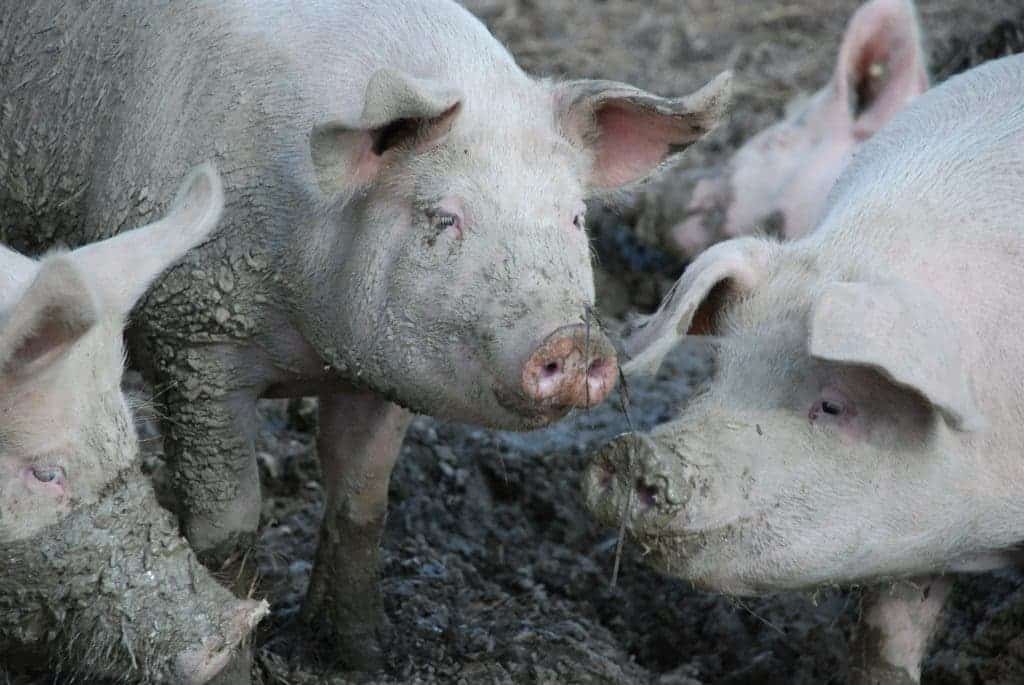
By the end of the century, the planet is expected to clock ten billion hungry mouths. Not only will this burgeoning population require more food, it also will expect higher quality, protein-rich food. For most people, this means meat. While improved agricultural practices and genetically modified organisms promise to ease the strain somewhat by increasing yield per square foot of crops or per energy input, the world also needs to cut down on meat which is highly carbon intensive, says the FAIRR (Farm Animal Investment Risk & Return) group.
FAIRR released a new report called The Future of Food: The Investment Case for a Protein Shake Up, in which it outlines the risks and opportunities for investors in the face of the impending protein crisis.
How meat is hurting the environment
Right now, most of our protein comes from livestock meat, 70% of which is produced in factory farms. The report’s authors argue that factory farms are a high-risk production method due to both environmental and health considerations.
The livestock sector currently accounts for 14.5% of greenhouse gas emissions (GHGs); more than the global transport sector. Rising antibiotic resistance is also linked to a high risk of pandemics, for instance, the outbreak of avian flu.
Meat production also promotes resource scarcity, one example being poorly managed water use. Depending on where it’s grown, one pound of beef uses 1,800 to 2,500 gallons of water. Then, livestock also requires animal feed sourced from crops, implying more deforestation, soil degradation, water and air pollution.
In short, the report cautions investors that our current levels of protein production are unsustainable, referencing a recent Oxford University study which found that “public health and environmental expenses associated with the increased demand for animal products could be up to $1.6 trillion globally by 2050.”
“The world’s over-reliance on factory-farmed livestock to feed the growing global demand for protein is a recipe for a financial, social and environmental crisis,” says Jeremy Coller, leader of the FAIRR (Farm Animal Investment Risk & Return) group. “Intensive livestock production already has levels of emissions and pollution that are too high, and standards of safety and welfare that are too low.”
How a sustainable protein chain looks like
The FAIRR coalition, which includes London-based Aviva Investors and other investment groups that collectively sum $1.25 trillion in managed assets, outlines what a sustainable protein chain ought to look like.
- Diversifying the range of protein on offer and prioritising choices that have less impact on health, land, water and the climate: for example, opting for sustainably sourced fish or poultry instead of beef, or beans instead of pork.
- Moving away from meat and dairy as the dominant ingredient in every menu option to instead making them an occasional complement to a meal.
- Selecting lean cuts for meals that do feature meat, and reducing or eliminating the use of red and processed meat (such as bacon, ham, and sausages).
- Sourcing food that meets a credible, certified standard – like Animal Welfare Approved or the Global Animal Partnership for high-welfare methods of farming in the US, the Marine Stewardship Council certification for sustainable fish, the Soil Association for organic certification in the UK.
- Producing and procuring appealing and accessible alternatives to meat, based on plant proteins and new food tech innovations.
According to market research referenced in the report, the market for protein-rich meat substitutes — food made from tofu, tempeh, textured vegetable protein, seitan, quorn and the likes — is expected to grow by 8.4% annually over the next five years.
[panel style=”panel-success” title=”Alternative to meat protein” footer=”FAIRR, “THE FUTURE OF FOOD: THE INVESTMENT CASE FOR A PROTEIN SHAKE UP””]Dairy-free milks: Almond, flax, hemp, rice and soy, which are often fortified with additional calcium and nutrients.
• Grains, legumes, nuts, pulses and seeds: Beans, lentils, oats, peas, and quinoa are just a few in this category that are full of soluble fibre, protein, and essential nutrients while also being low in saturated fat.
• Insects: Although already consumed in some countries opinions differ on how readily these will be welcomed into the global food chain; however, these could provide a valuable alternative source of animal feed, freeing up plant-based foods for human consumption.
• Lab, cultured or ‘clean’ meat: However, this technology is estimated to be several years away from being feasible at scale.
• Macro and micro-algae: Macro-algae are seaweeds, like dulse and kelp.
• Meat substitutes: Many of these are still based on soy (e.g. tempeh or tofu) or
wheat-protein (e.g. seitan), but there are also a broader range of alternatives such as pea, grain and nut-based products.[/panel]
Lower meat consumption would cut food-related emissions by 29%, vegetarian diets by 63%, and vegan diets by 70%. But then again, a world of vegetarians sounds like wishful thinking. Take China for instance, the most populated nation in the world. In 1982, the average Chinese person ate just 13kg of meat a year and beef was nicknamed “millionaire’s meat” due to its scarcity. More than half of all the world’s pigs live in China — an animal that’s associated with good fortune. Today, the average Chinese eats 63kg of meat a year. China’s seemingly insatiable demand for meat is expected to drive an additional consumption of 30kg of meat per person, a worrying trend which prompted the government to urge its citizens to cut back on the meat.
While a lot of people love meat, there’s genuine hope that meat consumption can be significantly cut back — or at least that the rate at which consumption is growing in some parts of the world can be slowed down. In 2014, 400 million animals were spared because people ate less meat. Twenty-five percent of US consumers decreased their meat intake from 2014 to 2015, and meat alternative sales grew from $69 million in 2011 to $109 million in 2015. Market analysis suggests that the millennial generation spends two to three times more than the general population on produce. They do so by buying meat alternatives, artisan cheese or locally grown vegetables, for instance.
“On a global basis, alternate protein sources will grow faster than meat and seafood, which currently dominate but will begin to wane in coming decades. Global production increases are expected for protein-rich crops including soy, peas, rice, flax, canola and lupin,” said David Sprinkle, Research Director, Packaged Facts.
While current trends of meat consumption are worrisome, the impending millennial revolution lends hope that we can make serious progress. There are many protein-rich alternatives to meat and many companies are smartening up — these are the kind of companies you’d like to invest in, FAIRR suggests.
We can all play our part. Remember, you don’t have to turn vegan. It’s enough to eat meat only once or twice a week, instead of every day.






